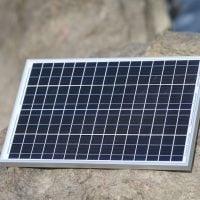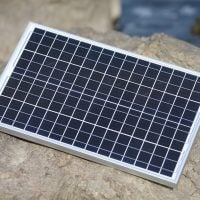The grant writing process is a multifaceted journey that requires careful planning, research, and execution. At its core, grant writing is about storytelling—crafting a narrative that not only highlights the needs of your organization but also illustrates how your proposed project aligns with the funder’s mission. Understanding this process begins with recognizing the importance of thorough preparation.
Before you even begin to write, it’s essential to familiarize yourself with the specific requirements of the grant you are pursuing. Each funder has unique guidelines, priorities, and expectations, which can significantly influence how you frame your proposal. Moreover, successful grant writing involves collaboration and input from various stakeholders within your organization.
Engaging team members who have expertise in different areas can enhance the quality of your proposal. For instance, involving educators, program managers, and financial officers can provide a well-rounded perspective on the project’s feasibility and impact. This collaborative approach not only enriches the content of your proposal but also fosters a sense of ownership among team members, which can be crucial for the project’s success if funded.
Identifying Funding Opportunities for STEM Education Programs
Identifying funding opportunities for STEM education programs requires a strategic approach that combines research with networking. Start by exploring government grants, private foundations, and corporate sponsorships that specifically target educational initiatives in science, technology, engineering, and mathematics. Websites like Grants.gov and Foundation Center can serve as valuable resources for discovering available grants.
Additionally, subscribing to newsletters from relevant organizations can keep you informed about new funding opportunities as they arise. Networking plays a pivotal role in uncovering potential funding sources. Attend conferences, workshops, and seminars focused on STEM education to connect with other professionals in the field.
These events often provide insights into which funders are currently active and what types of projects they are interested in supporting. Building relationships with funders can also lead to informal discussions about their priorities and preferences, giving you an edge when it comes time to submit your proposal.
Crafting a Compelling Proposal
Crafting a compelling proposal is an art that combines clarity, passion, and evidence-based arguments. Begin by clearly defining the problem your STEM education program aims to address. Use data and anecdotes to illustrate the urgency of the issue and why it matters to your community.
This sets the stage for presenting your program as a viable solution. Be sure to articulate your program’s goals and objectives in a way that resonates with the funder’s mission and values. In addition to outlining the problem and solution, it’s crucial to demonstrate how your program will be implemented effectively.
Provide a detailed description of the activities involved, the timeline for execution, and the personnel responsible for each task. Including measurable outcomes will strengthen your proposal by showing funders that you have a clear plan for assessing success. Remember to weave in stories or testimonials from past participants or beneficiaries to humanize your proposal and make it more relatable.
Developing a Budget for Your Grant Proposal
Developing a budget for your grant proposal is not merely a formality; it is a critical component that reflects the feasibility and sustainability of your project. Start by itemizing all potential expenses associated with your STEM education program, including personnel costs, materials, equipment, travel, and indirect costs. Be as detailed as possible to provide funders with a clear understanding of how their money will be spent.
This transparency builds trust and demonstrates your organization’s commitment to responsible financial management. In addition to outlining expenses, it’s important to justify each line item in your budget. Explain why each expense is necessary for the success of the program and how it aligns with your overall goals.
If applicable, consider including in-kind contributions or matching funds from other sources to showcase additional support for your project. This not only strengthens your budget but also signals to funders that there is broader community investment in your initiative.
Demonstrating the Impact of Your STEM Education Program
Demonstrating the impact of your STEM education program is essential for convincing funders of its value. Start by establishing clear metrics for success that align with your program’s goals. These could include quantitative measures such as student enrollment numbers, test scores, or graduation rates, as well as qualitative measures like participant satisfaction surveys or testimonials from educators and students alike.
By employing both types of metrics, you can provide a comprehensive view of your program’s effectiveness. Furthermore, consider developing a robust evaluation plan that outlines how you will collect and analyze data throughout the program’s implementation. This plan should detail who will be responsible for evaluation activities, what tools will be used (e.g., surveys, interviews), and how findings will be reported back to stakeholders.
A well-thought-out evaluation plan not only demonstrates accountability but also provides valuable insights that can inform future programming and grant applications.
Building a Strong Partnership with Funders
Building a strong partnership with funders goes beyond simply submitting a proposal; it involves cultivating relationships based on mutual respect and shared goals. Start by engaging with potential funders early in the process—before you submit your proposal. Reach out to them to discuss your project ideas and seek their input on how you can align your objectives with their funding priorities.
This proactive approach can help you tailor your proposal more effectively while also establishing rapport. Once you receive funding, maintaining open lines of communication is crucial for nurturing this partnership. Regularly update funders on your program’s progress through reports or informal check-ins.
Share successes as well as challenges; transparency fosters trust and demonstrates your commitment to accountability. Additionally, consider inviting funders to participate in program activities or events. This not only allows them to see their investment in action but also strengthens their connection to your organization.
Navigating the Grant Application Process
Navigating the grant application process can be daunting, but breaking it down into manageable steps can simplify the experience. Start by creating a timeline that outlines key deadlines for each stage of the application process—from initial research to final submission. This timeline should include time for drafting, revising, gathering supporting documents, and obtaining necessary approvals from stakeholders within your organization.
As you prepare your application materials, pay close attention to formatting and presentation guidelines provided by the funder. Adhering to these specifications demonstrates professionalism and respect for the funder’s time. Additionally, consider having someone outside of your organization review your proposal before submission; fresh eyes can catch errors or unclear language that you might have overlooked.
Tips for Writing a Successful Grant Proposal
Writing a successful grant proposal requires attention to detail and an understanding of what funders are looking for in a submission. One key tip is to tailor each proposal specifically to the funder’s interests and priorities. Avoid using a one-size-fits-all approach; instead, highlight aspects of your program that align closely with the funder’s mission statement or strategic goals.
Another important tip is to keep your writing clear and concise. Funders often review numerous proposals, so making yours easy to read can set it apart from others. Use straightforward language and avoid jargon unless it is industry-standard terminology that is widely understood by potential funders.
Finally, don’t underestimate the power of storytelling; weaving personal narratives or case studies into your proposal can create an emotional connection that resonates with reviewers. In conclusion, mastering the grant writing process is essential for NGO professionals seeking funding for STEM education programs. By understanding each step—from identifying funding opportunities to crafting compelling proposals—you can enhance your chances of securing financial support for impactful initiatives that benefit communities and foster future generations of innovators in science, technology, engineering, and mathematics.









































